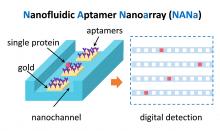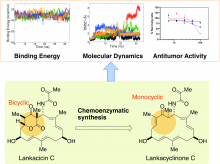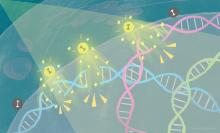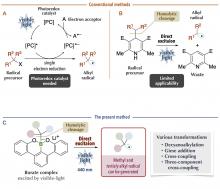Chemistry Medicinal chemistry
News
23 Jun 2023
An international team led by Professor Yan Xu from Osaka Metropolitan University has developed a groundbreaking nanofluidic device, named NANa, capable of stochastically capturing and digitally detecting individual proteins at cellular concentrations. This tool, vital for precision medicine, is designed to handle tiny volumes equivalent to a single cell's contents and can identify single biomolecules even in high-concentration environments. The team plans to conduct further demonstrations using actual cell samples and explore the integration of this tool with AI and biological big data. This research could potentially revolutionize personalized disease prevention and treatment.
31 Jan 2022
Garden soil houses a variety of bacteria and their natural byproducts — including one that may help halt tumor growth. Lankacidins are molecules that can be isolated from Strepomyces rochei, a common bacterium in soil. In addition to antimicrobial properties, a type of lankacidins, called lankacidin C, can inhibit tumor activity in various cancer cell lines, including leukemia, melanoma, ovarian and breast cancers. Lankacidin C offers a potential foundation on which to design anticancer drugs, but its structure is complicated and difficult to manipulate, according to an international research group. The same group recently identified where antitumor activity is housed on the molecule and has now used that information to simplify lankacidin as a potential starting point to engineer treatments.
27 Oct 2021
Researchers reveal correlation between ribotype (RT) strains of Cutibacterium acnes, which are found in human skin, and the lifespan of the nematode Caenorhabditis elegans. Strains RT4 and 8, which are associated with acne in human skin, shortened the lifespan of the nematode, while RT6, which are predominantly found in healthy human skin, did not. Also, it was found that the healthy skin-related RT6 strain of C. acnes improved C. elegans resistance to the pathogenic organism Staphylococcus aureus.
14 Jul 2021
Researchers have found a way to enhance radiation therapy using novel iodine nanoparticles.
28 May 2020
The generation of alkyl radicals was achieved by direct visible-light excitation of the organoborate complex, which was designed and synthesized from “boracene,” which has a boron atom in the tetracene-like skeleton. The alkyl radicals thus obtained could be used as a carbon source for chemical reactions, enabling the synthesis of complicated/bulky organic compounds. The present study offers a new protocol for organic synthesis, which is expected to accelerate e.g. drug discovery.
Events
Sorry, nothing coming up for this discipline
Researchers
Dr. Hira Khalid is serving as Associate Professor at Forman Christian College University, Lahore, Pakistan. She is also a US Fulbright Fellow and a member of several prestigious scientific organizations, including the American Chemical Society (ACS), the Royal Society of Chemistry (RSC), the International Union of Pure and Applied Chemistry (IUPAC), the Organization for Women in Science for the Developing World (OWSD), and the Chemical Society of Pakistan (CSP).
Giants in history
Indian organic chemist Asima Chatterjee (1917 to 2006) studied the medicinal properties of plant products, especially compounds known as vinca alkaloids.
Umetaro Suzuki (7 April 1874 – 20 September 1943) was a Japanese scientist best remembered for his research on beriberi, a disease caused by vitamin B1 deficiency, characterized by limb stiffness, paralysis and pain.
Salimuzzaman Siddiqui (19 October 1897 – 14 April 1994) was an artist and chemist from Pakistan whose research focused on natural products from plants.











